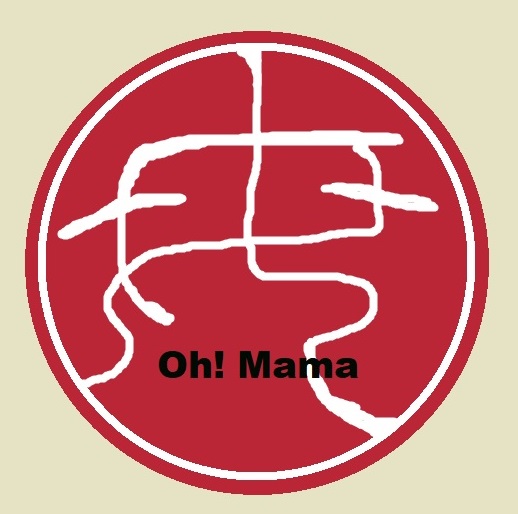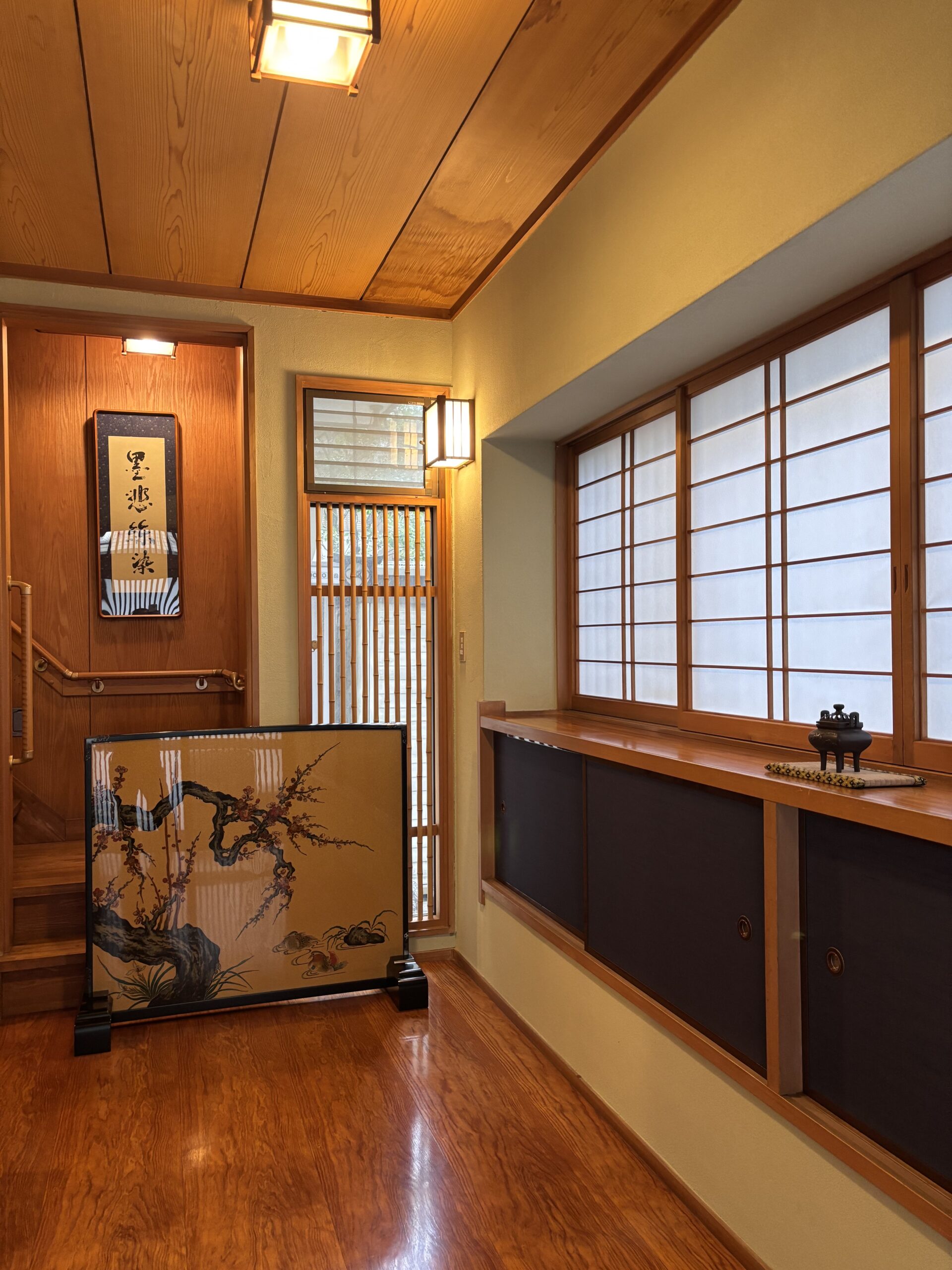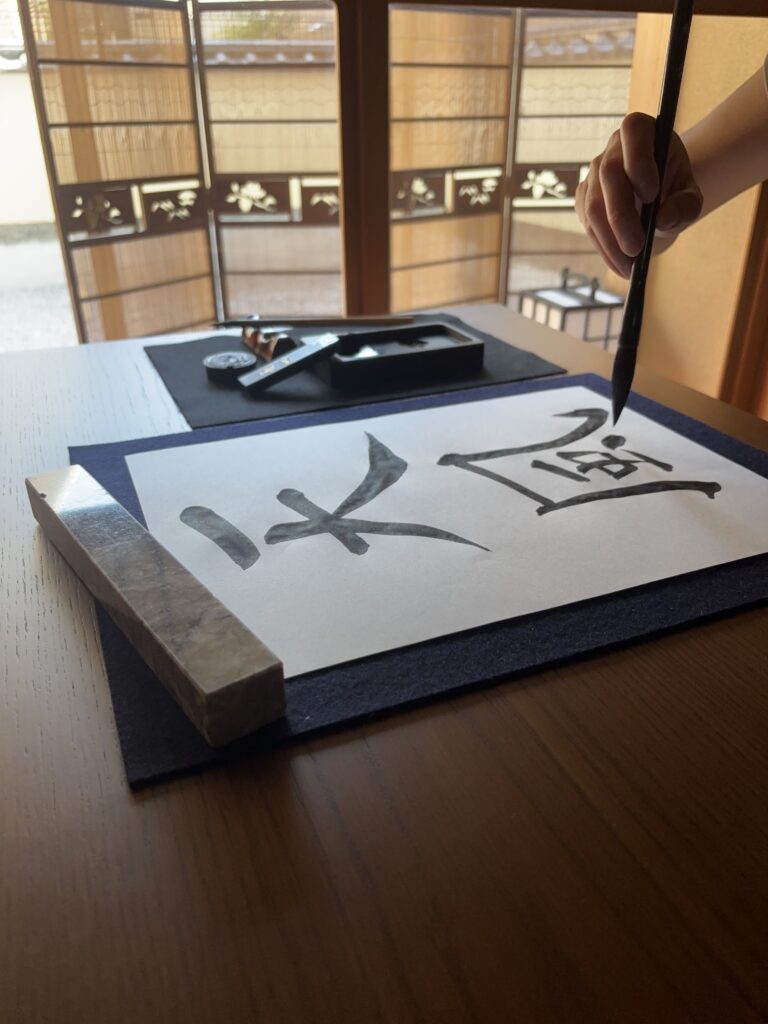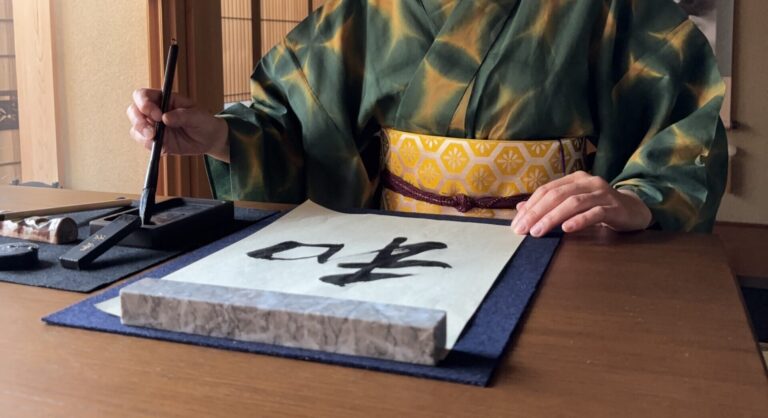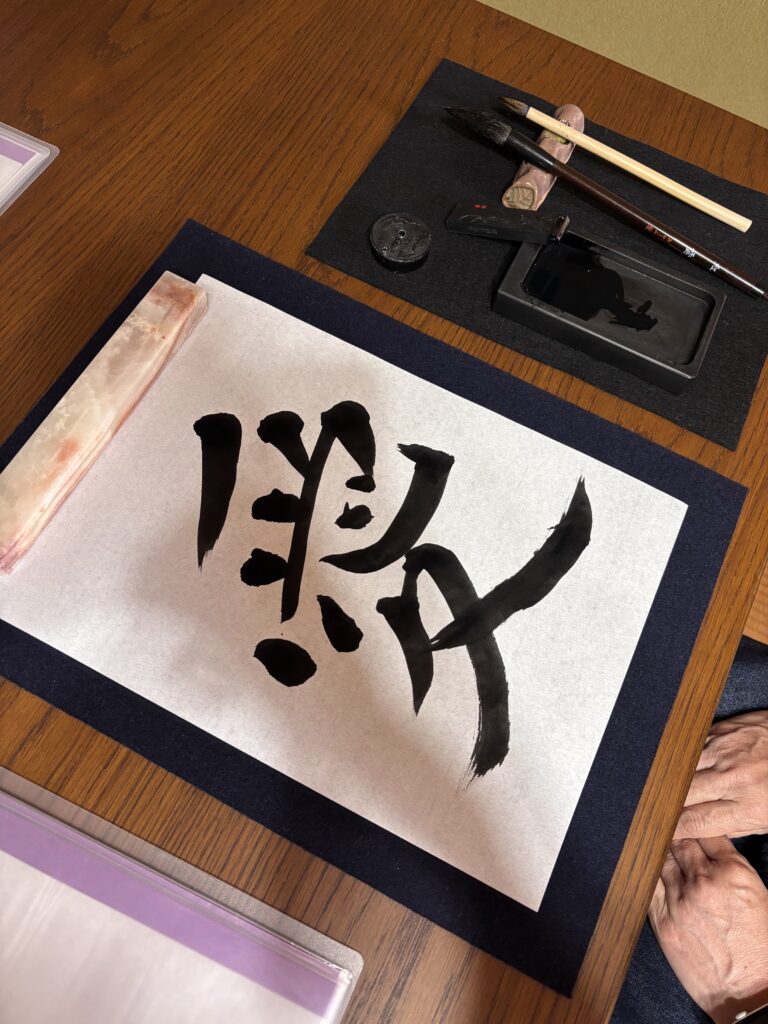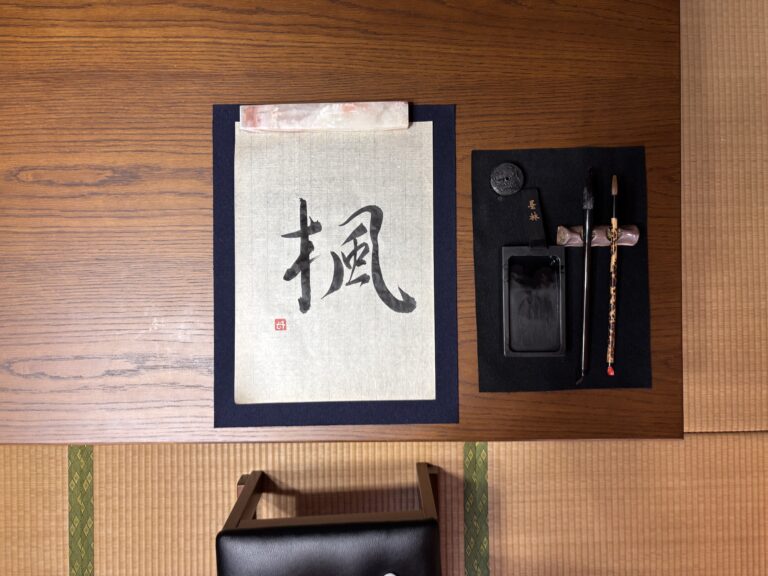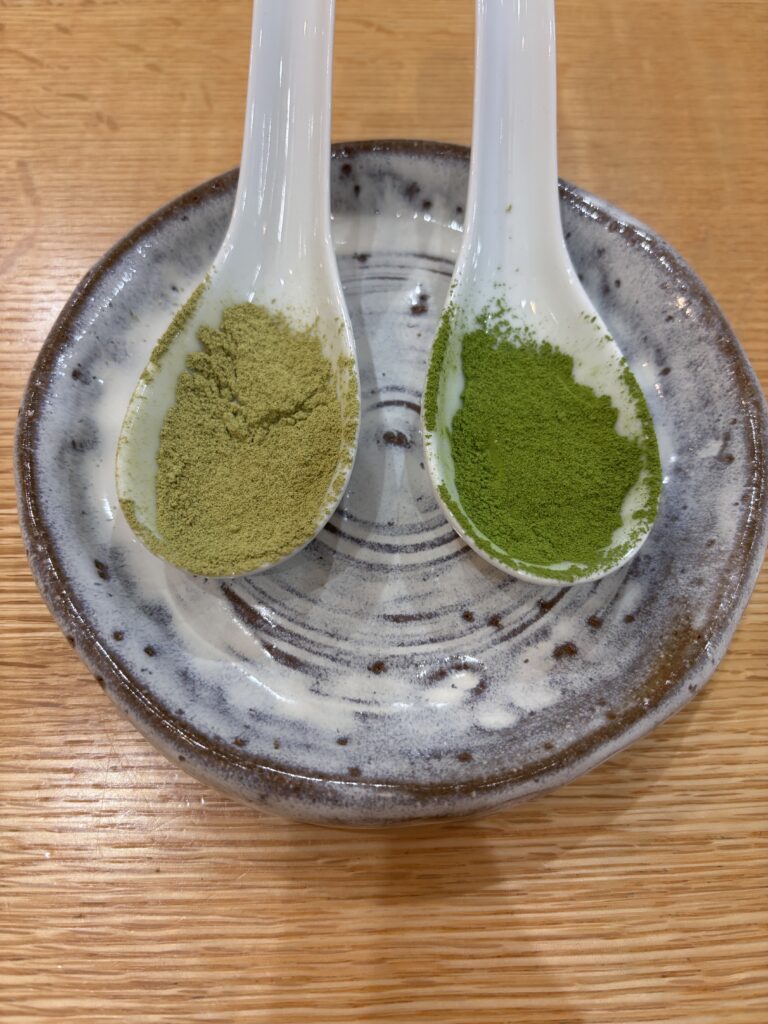Questions about Shodo, Japanese Calligraphy: Why Can’t Even Japanese People Read It?
In our salon, we have a few pieces of shodo (Japanese calligraphy) displayed on the walls.
Shodo is the art of writing characters with brush and ink. The black lines and rhythmic strokes create a sense of grace and power.
You might assume that Japanese people can always read these works — but in fact, many Japanese can’t read them either!
Visiting Japan’s Largest Calligraphy Exhibition
This summer, I visited the Mainichi Shodo Ten at the National Art Center, Tokyo — the largest calligraphy exhibition in Japan. One of our collaborators, Calligrapher Akagi Shoka, who had provided model pieces for our customers, received the Award of Shusaku-Sho, so I went to see her work in person.
The hall was filled with an overwhelming number of calligraphy pieces — a sea of black ink and flowing lines. And yet, to be honest… I couldn’t read almost any of them.
Why is that?
Here are the four main reasons why even native Japanese readers often can’t read shodo.
1. It Values Artistic Expression Over Readability
Calligraphy is art through writing. The goal isn’t to make the text legible — it’s to make it beautiful, expressive, and full of life.
Think of it like English cursive handwriting. If you never learned cursive, you probably can’t read it easily. Japanese has similar “handwriting styles” — gyosho (semi-cursive) and sosho (cursive). Sosho, in particular, looks like an entirely different language unless you’ve studied it.
Calligraphers freely alter the shapes of characters to express emotion:
rounding corners to soften the tone, scattering the layout to create movement,
even letting ink splashes fly to show energy.
As one of the most famous tea masters Souga once said on YouTube:
“You don’t have to read it — just feel and enjoy it.”
So, the best way to enjoy shodo is to simply absorb its mood and rhythm. If you really want to know what it says, ask the owner or curator afterward.
2. The Words Aren’t Always in Japanese
Many calligraphy works actually use classical Chinese texts. That’s because Japanese kanji originally came from China.
For example, the piece displayed at our salon’s entrance reads “墨悲絲染 (Boku hi shi sen)”, a phrase from the ancient Chinese philosopher Mozi.
When an ordinary Japanese person sees this phrase without any background knowledge, they might only recognize the individual characters — “ink,” “sadness,” “thread,” and “to dye.” That’s all they can guess from the kanji themselves.
However, the actual meaning is much deeper:
“Just as thread is easily dyed, so too can the human heart be easily stained by evil — and that is sorrowful.”
Even if you recognize the characters, you still might not understand it — because it’s written in Chinese, not Japanese.
Buddhist sayings (Zen phrases), which are often seen in tearooms, also come from Chinese texts.
Buddhism originated in India and was transmitted to Japan through China,
bringing Chinese-language scriptures with it.
So yes — one big reason shodo is unreadable is simply that it’s written in another language.
3. It Uses Ancient Characters
The earliest known Chinese characters appeared sometime between the 16th and 11th centuries BCE, and their forms have changed greatly over time. Calligraphers sometimes deliberately use ancient scripts to create a sense of beauty.
Naturally, most modern readers can’t decipher them.
Japan also developed its own writing system around the 10th century. In early Japanese texts, the same sound could be written with several different characters, and letters were often connected in flowing strokes. As a result, many old Japanese calligraphic works are even harder to read than Chinese ones!
4. Some Works Are Purely Abstract — “Avant-Garde Calligraphy”
There is a branch of calligraphy known as zen-ei-sho, or avant-garde calligraphy. In this style, the work is not meant to be read at all. It’s purely about movement, balance, contrast, and emotion — an art form that transcends language.
You can think of it as abstract painting using characters as inspiration. It’s not about letters anymore; it’s about expression.
In Conclusion
Shodo is not about reading words — it’s about feeling them.
Each brushstroke carries the rhythm, energy, and spirit of the artist.
So next time you see a calligraphy piece, try asking to yourself “What does it feel like?” instead of “What is it written?”
Let the art speak beyond words.
Would you like to experience the art of Japanese calligraphy (Shodo) yourself?
At our salon, you can try your hand at Shodo and Sado (the tea ceremony) in a calm, traditional atmosphere.
Discover the beauty of brush, ink, and your heart.
